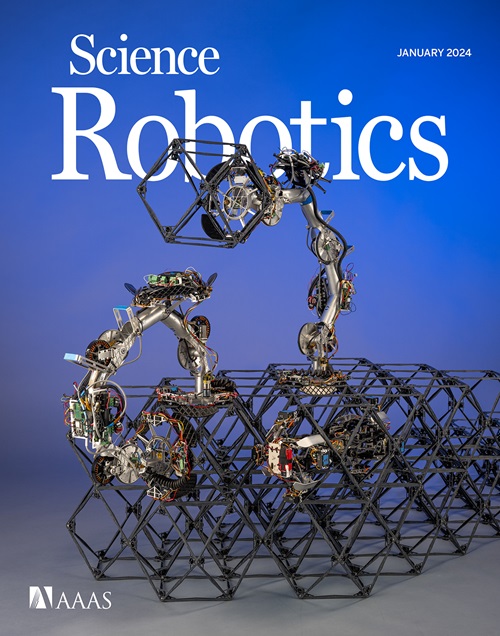复杂环境下具有稳定性的车辆轨迹分层描绘
IF 27.5
1区 计算机科学
Q1 ROBOTICS
引用次数: 0
摘要
自主机器人的快速发展产生了显著的社会效益和经济效益。然而,使机器人能够像人类一样灵活地在复杂的环境中导航仍然是一个艰巨的挑战。与机器人不同的是,人类擅长寻路,因为他们有超强的空间意识和利用经验的能力。受这些观察结果的启发,我们设计了一个神经网络来模拟人类的直觉寻路能力,整合全球环境信息和先前的经验来识别可行的路径。实验表明,与传统算法在复杂环境下效率下降不同,该方法保持了稳定的计算性能。为了进一步提高运动质量,我们引入了一个数值稳定的时空轨迹优化器,该优化器在平面空间中具有独特的双层多项式轨迹表示。该优化利用微分平坦度提高了效率,并从根本上消除了原问题的奇异性,从而在复杂机动场景下也能鲁棒收敛到连续可行运动。通过大规模迷宫实验验证,我们的分层运动规划器将前端路径规划与后端轨迹优化相结合,实现了鲁棒和高效的导航。我们期望我们的规划器能够促进机器人在复杂环境中的稳定导航,从而推动机器人自主性的进步。本文章由计算机程序翻译,如有差异,请以英文原文为准。
Hierarchically depicting vehicle trajectory with stability in complex environments
The rapid development of autonomous robots has resulted in marked societal and economic benefits. However, enabling robots to navigate complex environments with human-like agility remains a formidable challenge. Unlike robots, humans excel at pathfinding because of their superior spatial awareness and their ability to leverage experience. Inspired by these observations, we designed a neural network to simulate the intuitive pathfinding abilities of humans, integrating global environmental information and previous experiences to identify feasible pathways. Experiments demonstrated that, unlike traditional algorithms whose efficiency deteriorates in complex settings, the proposed method maintains stable computational performance. To further enhance motion quality, we introduce a numerically stable spatiotemporal trajectory optimizer with a unique bilayer polynomial trajectory representation in flat space. This optimization leverages differential flatness to enhance efficiency and fundamentally eliminates singularities in the original problem, thereby robustly converging to continuous and feasible motion even in complex maneuvering scenarios. Our hierarchical motion planner, validated through large-scale maze experiments, combines front-end path planning with back-end trajectory refinement, achieving robust and efficient navigation. We anticipate that our planner will advance stable navigation for robots in complex environments, thereby propelling the progress of robotic autonomy.
求助全文
通过发布文献求助,成功后即可免费获取论文全文。
去求助
来源期刊

Science Robotics
Mathematics-Control and Optimization
CiteScore
30.60
自引率
2.80%
发文量
83
期刊介绍:
Science Robotics publishes original, peer-reviewed, science- or engineering-based research articles that advance the field of robotics. The journal also features editor-commissioned Reviews. An international team of academic editors holds Science Robotics articles to the same high-quality standard that is the hallmark of the Science family of journals.
Sub-topics include: actuators, advanced materials, artificial Intelligence, autonomous vehicles, bio-inspired design, exoskeletons, fabrication, field robotics, human-robot interaction, humanoids, industrial robotics, kinematics, machine learning, material science, medical technology, motion planning and control, micro- and nano-robotics, multi-robot control, sensors, service robotics, social and ethical issues, soft robotics, and space, planetary and undersea exploration.
 求助内容:
求助内容: 应助结果提醒方式:
应助结果提醒方式:


